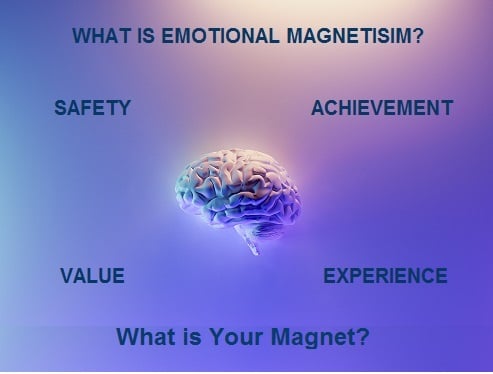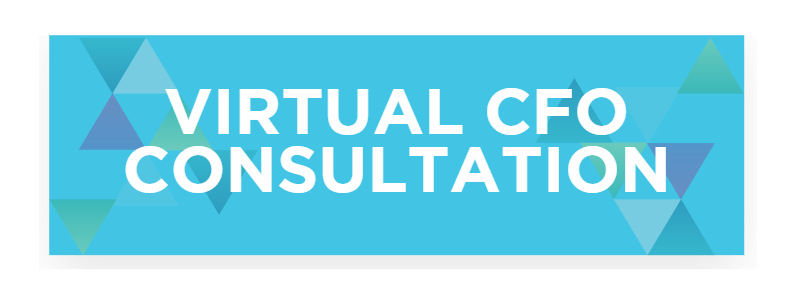Find out what motivates people and you’ll understand what drives their decisions.
Tis the season for … stress. I get it; people are burnt out. They’re even quietly quitting. Whatever the specific issue, there’s an underlying problem–a lack of motivation. But what if it’s not that people don’t want to work? What if their job is just offering them the wrong kind of motivation?
As Sandy Gerber says, it’s all a question of magnetism. I had the opportunity to record a podcast with Sandy, author of Emotional Magnetism. She concludes that we are all motivated by one of four emotional needs, which drives all our decisions in life–everything from which restaurant to choose for takeout to whether to sign on the dotted line with a new vendor.
Sandy researched this theory for nine years because she was interested in understanding how to close more sales, but she came to realize that our emotional magnets run deep: when someone tries to appeal to the wrong magnet we feel unappreciated, dissatisfied, and uninterested in giving our best. 
“Treat others as you want to be treated,” the saying goes. That’s not quite right, according to the theory of emotional magnetism: we should really treat others the way that they want to be treated. Once we understand our magnet, we can figure out what motivates our colleagues and clients, which will lead to better relationships with both.
Emotional magnetism is a great tool to have in your arsenal, along with all the other personality profiles and tests because it will help with self-assessment, understanding your employees, as well as the sales and marketing processes.
SAVE: What is Emotional Magnetism?
Emotional magnetism is an easy tool that you can use to communicate more effectively. There are four magnets that you can remember with the word SAVE.
Safety: They want security, structure, organization, and boundaries. They do not like change.
Achievement: They are natural competitors. They want recognition and competition.
Value: They want to maximize time and money and make sure there’s a return on their investment.
Experience: They are interested in learning new things. They like change, and they are curious.
Self-Assessment: Know Your Magnet
If you’re like me, you’re probably already trying to figure out your magnet. At Summit, we’re big believers in self-assessments. Before you can know how someone else works, you must first know how you work and what drives you.
After I read Emotional Magnetism, I took the quiz. My primary magnet is “experience” followed by “achievement.” I scored lowest on “safety.” If you know me, you’re not surprised by either!
Hiring and Onboarding New Employees
One-on-one: Find out their magnet
When you’re hiring for a position, you might not know what a person’s magnet is. This is where you have to do some detective work. Don’t wait until too late in the process to ask probing questions. Sandy likes to start with something direct like, “What does success look like for you?”
Their answer will give you a pretty good idea of their magnet. In some cases, a specific magnet might lend itself to a position–value is great for working with budgets, experience is ideal for developing new products, etc. But the main payoff is using the magnet to deliver work expectations and recognition: a ‘safety’ person will want to know their set schedule, an ‘achievement’ person will want to know how they are leaving a legacy, and so on.
Carry this over to the new-employee onboarding. Do you need to create an agenda or start with an experience? Remember to structure the process by focusing on what will drive someone not only to do their best but be their best; this is key during onboarding, as you want to give a new hire the best start to success with your company. During onboarding, a new employee at Summit is asked to take the DiSC assessment.
Group: Deliver content on all four magnets
When you’re working with a group of people, and you’re not sure of their respective magnet, you must cater to all four; for example, we have several company retreats throughout the year. When we develop the agenda for our company-wide event, we need to incorporate each one of the four emotional magnets, not just mine or my partner’s and Summit’s Co-founder, Adam Hale.
Without assuming Adam’s magnet, it’s safe to say ours are pretty different; and it shows when we plan our retreat agenda. I want to make our retreats as fun as possible and want everybody going out and being social. But Adam would rather spend time on tactical workshops.
Having different magnets can be a source of conflict, if each person thinks theirs is the “right” one. But when you value other people’s magnets, you are able to make more connections: Adam and I offer different things at the retreats that touch on all four magnets–ensuring everyone is motivated by something and leaves feeling like they learned something. In developing the agenda for team retreats we need to be sure it incorporates both.
Sales and Marketing Processes
One-on-one: Discover their magnet
High-quality service starts when you know your customer. This starts during the sales process. You’re still in the dating phase, and they might be comparing you with another competitor. Ask specific, open-ended questions and intently listen to what they are saying; pay attention to clues that fall within the boundaries of each magnet, so you can customize your sales pitch: If they care about safety, emphasize your processes; if they care about value, highlight the efficiencies you’ll bring to their business, and so on. At the same time, be careful not to let your magnet drive the interaction, especially if it conflicts with theirs. If my magnet is experience and I love to take clients to a new restaurant to discuss a deal, I want to be careful with a client whose magnet is value: maybe they’d prefer to chat over drinks. If their magnet is safety, I’m going to make sure our meeting has structure, even if my preference would be to just go with the flow. If I want to make the sale–and build the relationship to last–I have to deliver based on their needs.
Group: Deliver content on all four magnets
When you have a specific niche like Summit, which is Virtual CFO services (service niche) and creative agencies (industry niche), you know your target; however, because we use inbound marketing strategies, we don’t necessarily know the magnet of the people our content reaches.
Your content strategy can incorporate messaging and offerings that appeal to each magnet: Free step-by-step guides might appeal to the value or safety magnet; a page on your website dedicated to your awards and industry recognition will attract the achievement magnet; images of all the exciting things your company can offer could speak to the experience magnet.
Then, when you’re going through the sales process with a potential client and you’ve pinpointed their magnet, ask what led them to you. Was there a specific marketing piece that helped close the deal? Maybe it was an article or a podcast episode. If so, can you tie it to one magnet? Knowing your clients and what motivates them is powerful and helps you provide them the ultimate service experience.
Cancel conflict by knowing people’s magnets
People often go wrong when they think their magnet works for everyone: They don’t take into consideration that a coworker, client, or employee might be motivated by something different.
That insight can help us shift our mindset: don’t think about what you're going to do for them but what they need from you. You don’t want to go against their magnet; you want to work with it.
When we work with someone else’s magnet, it’s not about giving up yours: you’re meeting people where they are and being open about where you are, too. Tell them your magnet and ask them about theirs. On the flipside, you’re not pushing your magnet on anyone. Think of emotional magnetism as another way to understand people and respond to them with what they need.
Once you understand, it’s easy to deliver.
.png?width=120&height=77&name=Summit-Virtual-CFO_color_rgb%20(1).png)














